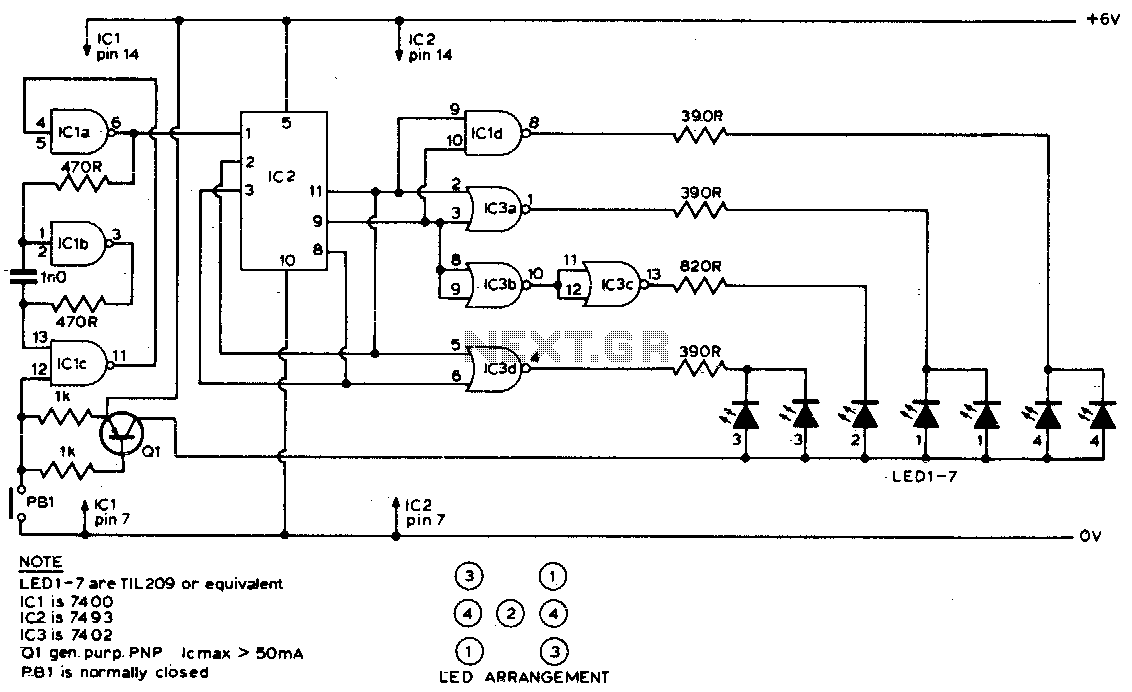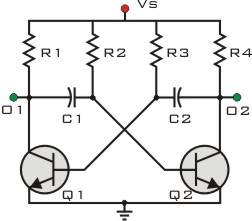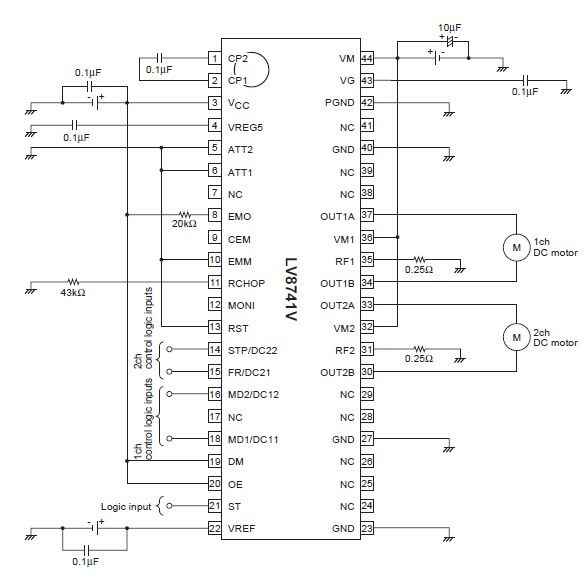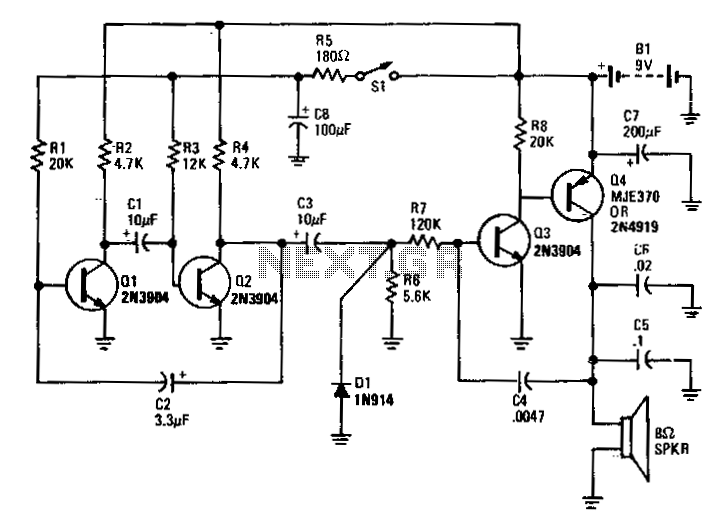
fun electronic circuits

This circuit serves as a decorative element or indicator, featuring adjustable flashing or dancing speeds of LEDs and the ability to create various light patterns. It comprises two astable multivibrators; the first is constructed using transistors T1 and T2, while the second is formed by T3 and T4. The duty cycle for each multivibrator can be modified by altering the RC time constant, which is facilitated through potentiometers VR1 and VR2, allowing for different LED dancing patterns. The total cost of this circuit is approximately Rs 30. Additionally, the potentiometers may be substituted with light-dependent resistors, enabling the LED dance patterns to respond to the ambient light intensity. The arrangement of colored LEDs can be visualized as depicted in the accompanying figure.
The circuit utilizes two astable multivibrators to create a visually dynamic LED display. Each multivibrator operates independently, generating square wave outputs that drive the LEDs. The transistors T1 and T2 form the first multivibrator, where the timing components (resistors and capacitors) dictate the oscillation frequency. The second multivibrator, made up of transistors T3 and T4, operates under similar principles.
The RC time constant, which is critical in determining the frequency and duty cycle of the output signals, can be adjusted using the potentiometers VR1 and VR2. This feature allows for fine-tuning of the LED flashing rates and patterns, providing a customizable user experience. By varying the resistance of these potentiometers, the charging and discharging times of the capacitors can be changed, thus altering the frequency of the output pulses.
In an alternative configuration, using light-dependent resistors (LDRs) instead of potentiometers introduces a reactive element, allowing the circuit to adapt its performance based on ambient lighting conditions. This modification creates a more interactive display, where the speed and pattern of the LED flashing respond dynamically to changes in light intensity.
The design's simplicity, along with its low cost, makes it an accessible project for hobbyists and educators alike. The circuit can be easily constructed on a breadboard or printed circuit board (PCB), and the arrangement of colored LEDs can be customized to enhance visual appeal, making it suitable for various applications such as decorative lighting, indicators, or educational demonstrations in electronics.Here is a simple circuit which can be used for decoration purposes or as an indicator. Flashing or dancing speed of LEDs can be adjusted and various dancing patterns of lights can be formed. The circuit consists of two astable multivibrators. One multivibrator is formed by transistors T1 and T2 while the other astable multivibrator is formed by T3
and T4. Duty cycle of each multivibrator can be varied by changing RC time constant. This can be done through potentiometers VR1 and VR2 to produce different dancing pattern of LEDs. Total cost of this circuit is of the order of Rs 30 only. Potentiometers can be replaced by light dependent resistors so that dancing of LEDs will depend upon the surrounding light intensity. The colour LEDs may be arranged as shown in the Figure 🔗 External reference
The circuit utilizes two astable multivibrators to create a visually dynamic LED display. Each multivibrator operates independently, generating square wave outputs that drive the LEDs. The transistors T1 and T2 form the first multivibrator, where the timing components (resistors and capacitors) dictate the oscillation frequency. The second multivibrator, made up of transistors T3 and T4, operates under similar principles.
The RC time constant, which is critical in determining the frequency and duty cycle of the output signals, can be adjusted using the potentiometers VR1 and VR2. This feature allows for fine-tuning of the LED flashing rates and patterns, providing a customizable user experience. By varying the resistance of these potentiometers, the charging and discharging times of the capacitors can be changed, thus altering the frequency of the output pulses.
In an alternative configuration, using light-dependent resistors (LDRs) instead of potentiometers introduces a reactive element, allowing the circuit to adapt its performance based on ambient lighting conditions. This modification creates a more interactive display, where the speed and pattern of the LED flashing respond dynamically to changes in light intensity.
The design's simplicity, along with its low cost, makes it an accessible project for hobbyists and educators alike. The circuit can be easily constructed on a breadboard or printed circuit board (PCB), and the arrangement of colored LEDs can be customized to enhance visual appeal, making it suitable for various applications such as decorative lighting, indicators, or educational demonstrations in electronics.Here is a simple circuit which can be used for decoration purposes or as an indicator. Flashing or dancing speed of LEDs can be adjusted and various dancing patterns of lights can be formed. The circuit consists of two astable multivibrators. One multivibrator is formed by transistors T1 and T2 while the other astable multivibrator is formed by T3
and T4. Duty cycle of each multivibrator can be varied by changing RC time constant. This can be done through potentiometers VR1 and VR2 to produce different dancing pattern of LEDs. Total cost of this circuit is of the order of Rs 30 only. Potentiometers can be replaced by light dependent resistors so that dancing of LEDs will depend upon the surrounding light intensity. The colour LEDs may be arranged as shown in the Figure 🔗 External reference





